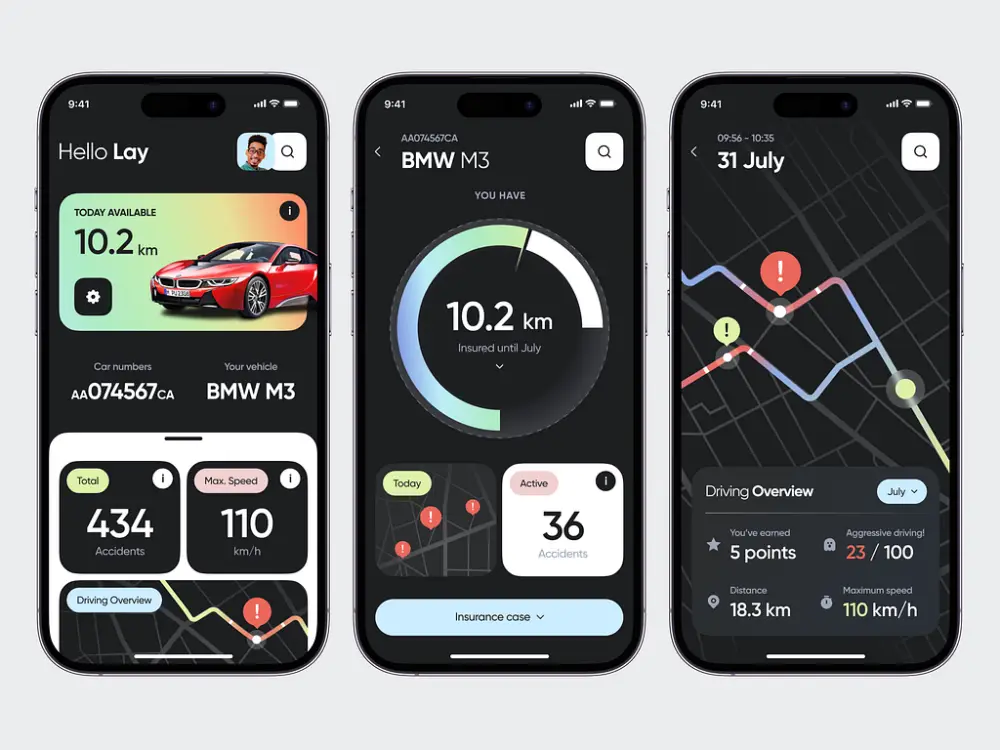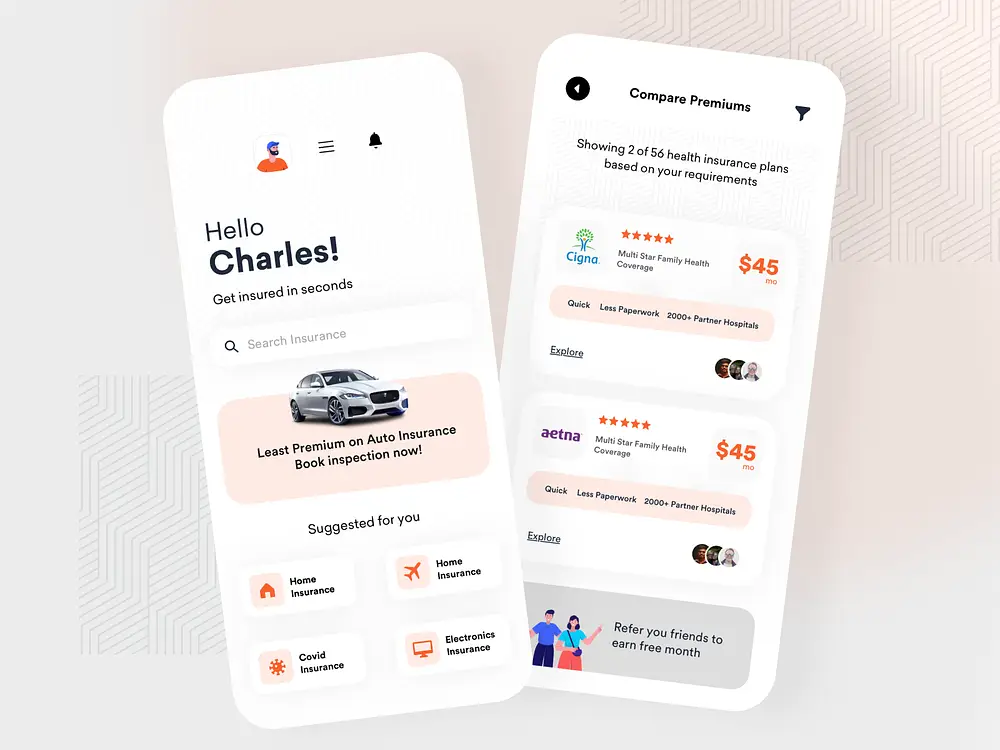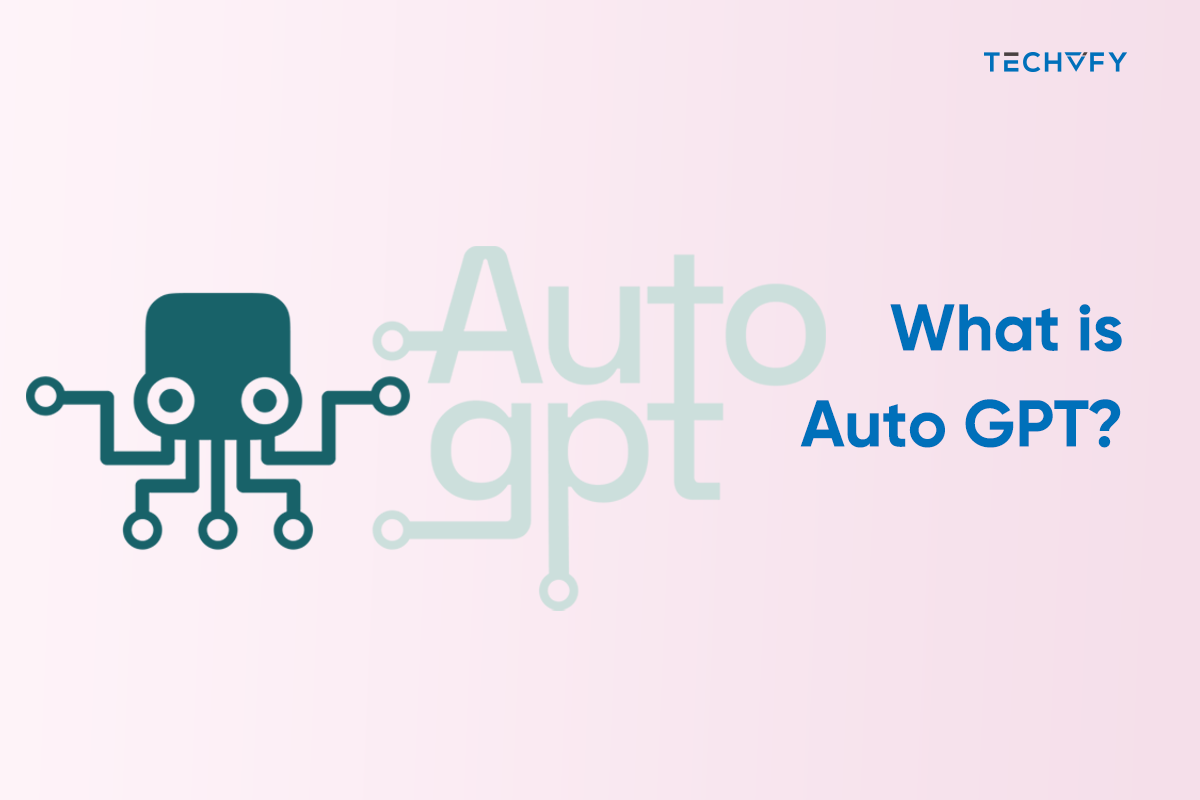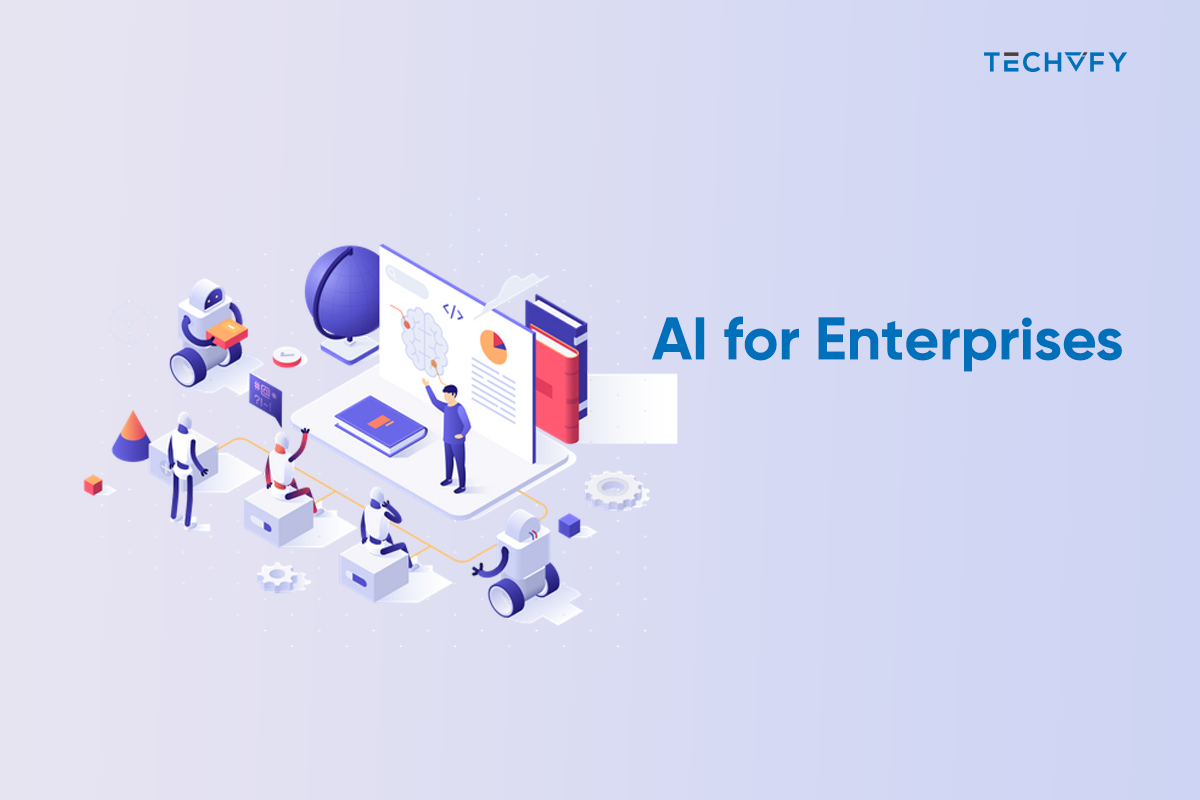All You Need To Know About Generative AI in Insurance
- TECHVIFY Team
- 0 Comments
The insurance landscape is undergoing a remarkable transformation, driven by the advent of cloud computing and sophisticated data analytics. At TECHVIFY, we’re at the forefront of integrating Generative Artificial Intelligence (AI) into the insurance sector, heralding a new era of customized policyholder experiences and automation.
In our forthcoming article, we will explore how generative AI is poised to revolutionize the insurance industry. We’ll delve into the transformative possibilities this technology offers, address the challenges it presents, and outline strategic approaches for crafting effective AI-powered insurance solutions. Prepare to navigate the exciting intersection of AI and insurance with us!
Here’s a glimpse at some compelling statistics that paint a picture of this technology’s burgeoning significance:
- A projection by Statista places the global generative AI market at an impressive $207 billion by 2030.
- With a CAGR of 24.40%, the growth of generative AI is a clear indicator of its integral role in future technological landscapes.
- MarketsandMarkets research forecasts the AI in insurance market to expand from $1.3 billion in 2020 to $3.9 billion by 2025, marking a CAGR of 20.1%.
The infusion of generative AI into insurance is more than just a trend; it’s a strategic evolution that is gaining momentum.
1. The Dawn of a New Era: Generative AI’s Impact on Insurance
Generative AI stands out for its remarkable capability to create fresh, unique content through advanced deep learning models. These models, powered by data science, train complex neural networks on extensive datasets, enabling the AI to emulate human-like reasoning in predicting potential outcomes. For instance, take ChatGPT – a generative AI marvel that can craft poetry echoing the nuances of human-written verses.
In the bustling world of insurance, generative AI harnesses the vast amounts of data generated by the industry to drive groundbreaking changes. Insurers are on a perpetual quest to balance risk management with the provision of varied premium options to a diverse customer base. As entities driven by profit, these companies place a premium on maintaining transparency and efficiency in policy underwriting, claims processing, and the broadening of their service offerings.
With its track record of boosting efficiency across different sectors, generative AI is perfectly positioned to catalyze similar advancements within the insurance domain. Industry forerunners are optimistic that insurance firms will venture into the realm of generative AI in the near future, and are likely to scale up AI-driven solutions across the organization once they navigate through the initial uncertainties.
Have a Project Idea in Mind?
Get in touch with experts for a free consultation. We’ll help you decide on next steps, explain how the development process is organized, and provide you with a free project estimate.
2. Unlocking the Potential of AI in the Insurance Industry
Generative AI is reshaping the insurance industry, offering a spectrum of benefits that, when adeptly leveraged, can transform the very fabric of insurance operations. The technology is not merely a trend; it’s becoming a cornerstone for insurers who aim to thrive in an increasingly digital landscape.
Revolutionizing Customer Engagement
The customer experience is the battleground where insurers vie for supremacy. Generative AI steps into this arena, arming companies with tools for more responsive, personalized interaction. Integrated within customer service platforms, it allows customers to effortlessly interact with AI chatbots, making policy information retrieval as simple as engaging in conversation.
Elevating Underwriting Processes
Underwriting, the critical process of crafting policies that are both appealing to customers and mindful of risk, has long been a complex task. Generative AI cuts through the data deluge, enabling underwriters to make informed risk assessments with newfound speed and accuracy. This technological prowess transforms underwriting from a daunting challenge into a streamlined operation.
Accelerating Claims Processing
Claims processing, traditionally bogged down by manual interventions, finds a new pace with generative AI. By automating the mundane and repetitive tasks that have historically eaten into valuable time, generative AI paves the way for a swifter, more accurate claims experience, much to the relief of both customers and insurance staff.
Enhancing Fraud Detection and Prevention
The fight against fraud is relentless, with malicious actors constantly devising new schemes. Generative AI serves as a vigilant guardian, sifting through patterns in customer data to flag anomalies. When something suspicious arises, the system quickly alerts personnel, thwarting fraudulent attempts before they can harm the company’s finances.
Steering Proactive Risk Management
Insurance is an industry built on predicting and managing risk. Generative AI’s deep learning capabilities extend insurers’ foresight, analyzing demographic and historical data to uncover risk factors that may escape human analysis. This predictive power allows insurers to stay ahead, anticipating and mitigating risks before they manifest.
Mining Data for Strategic Insight
Insurers are stewards of vast quantities of data, and generative AI is the key to unlocking its value. With the ability to analyze this data en masse, insurers can spot trends, understand their market and competition, and fine-tune their strategies. It’s a tool that not only reveals what is but can also predict what could be, guiding insurers to make decisions that resonate with customers’ evolving needs.
Optimizing Cost Efficiency
The quest for operational efficiency and cost savings is constant. Generative AI rises to this challenge, streamlining decision-making processes and minimizing wastage through automation and advanced analytics. The result is a leaner, more agile operation that can adapt to market changes with greater ease.
Securing Data and Compliance
As insurers navigate the complexities of data security and privacy regulations, generative AI emerges as a critical ally. It scrutinizes transactions and data access in real-time, offering immediate alerts to potential threats. Moreover, it aids in the analysis of regulatory requirements, ensuring that insurers’ policies remain in lockstep with compliance mandates.
Generative AI is not just transforming insurance — it’s redefining it, introducing a new era where efficiency, security, and customer satisfaction are inextricably linked. It’s a powerful force, driving innovation and providing insurers with the tools to not just survive but thrive in the digital age.
3. Possible AI Use Cases In Insurance
Generative AI is quietly revolutionizing the insurance sector, gradually but surely altering traditional workflows into more efficient, customer-centric experiences. The potential applications of this technology in the insurance world are as varied as they are impactful.
Streamlining Underwriting with Automation
Imagine underwriters equipped with a digital assistant that automates risk assessments, premium calculations, and even the drafting of legal terms. Generative AI can take on this role, sifting through medical histories and demographic data to help medical insurers craft optimal policies.
Crafting Personalized Insurance Policies
Generative AI is set to change the game for insurers by creating highly personalized policies. It’s like having a bespoke tailor for your insurance needs, with pet insurers analyzing everything from spending habits to the pet’s breed to offer policies that resonate on a personal level.
Enhanced Fraud Detection and Prevention
Generative AI is the new guardian against fraud, capable of scrutinizing patterns and validating claims with an almost forensic attention to detail. Medical insurers, for example, are using AI to make sure every bill and health report is above board.
Automating the Claims Process
Generative AI takes on the heavy lifting in claims processing, from categorizing claims to sorting them based on various parameters. Property insurers are now deploying AI to breeze through claims categorization, making the process faster and more consistent.
Virtual Assistants for Superior Customer Support
The integration of generative AI in customer service is like giving policyholders a personal concierge. Auto insurance holders can now interact with AI chatbots that not only assist with claims but can also guide them through the intricacies of policy management.
Predictive Analytics for Proactive Risk Management
With generative AI, insurance providers can foresee potential pitfalls and take pre-emptive action. Travel insurers, for instance, are using AI-driven models to anticipate incidents that could affect their clients, ensuring comprehensive coverage against the unforeseen.
Anomaly Detection for Enhanced Integrity
Generative AI serves as an analytical detective, spotting irregularities that could signal issues. Auto insurers, tapping into this capability, can sift through accident claims to find discrepancies, ensuring that payouts are justified and accurate.
Assessing Claims with Image and Video Analytics
The use of generative AI extends to the assessment of visual evidence, where deep learning models analyze photos or videos to accurately judge damage and claim validity. Property insurers are already harnessing this technology to make faster, fairer assessments of damage severity.
In the hands of innovative insurance companies, generative AI is not just a tool but a transformative force, enhancing every facet of the insurance process from policy creation to claims settlement. It’s a brave new world where efficiency and personalization are not just ideals but everyday realities.
Let’s talk
A consultation with the Client Relationship Manager, who represents TECHVIFY, without any commitment from your side, will give you:
- Structured and clear vision of your future application
- Information about how our software development company guarantees 100% on-time and on-budget delivery
- Recommendations for choosing the tech stack
- Advice on further steps
- Business-side recommendations
- Rough project estimation on software development
TECHVIFY is right where you need. Contact us now for further consultation:
4. Best Tech Stack For Generative AI In Insurance
The technological underpinnings of generative AI in insurance are robust, leveraging the latest advancements in machine learning and neural networks. This tech stack is not only complex but highly adaptable, catering to an array of applications that enhance insurance products and services.
Harnessing Deep Learning Models
Deep learning has ushered in a new era of AI capabilities, with models such as transformers and advanced neural networks operating on a scale previously unimaginable. These models distinguish themselves with numerous layers that can distill a wealth of information from vast datasets, leading to rapid and precise learning. They convert text into numerical values known as embeddings, which enable nuanced natural language processing tasks.
- AI Models for Advanced Comprehension: Names like GPT-3.5, GPT-4, Bard, and LLaMa represent the pinnacle of AI’s ability to grasp complex word relationships. Insurance companies can leverage these for document sorting, detecting fraudulent patterns, and summarizing claims.
- Whisper for Multilingual Communication: OpenAI’s Whisper, with its streamlined architecture, excels at speech recognition and translation, making it an invaluable tool for insurers looking to provide multilingual virtual assistant services.
- DALL.E and SAM for Visual Processing: Image-focused models like DALL.E and SAM are trained to generate and process images, which can be revolutionary for auto insurers. They can assess vehicle damage from photos, streamlining the claims process.
Employing Machine Learning Algorithms
Prior to the advent of deep learning, simpler machine learning algorithms, which are less resource-intensive, were the mainstay. These algorithms still have significant applications in the insurance sector.
- CNN for Spatial Analysis: Convolutional neural networks are adept at interpreting spatial information, which insurance companies can use for analyzing images or videos of incidents or property damages.
- RNN for Textual Data: Recurrent neural networks process sequential data and are particularly useful for predictive modeling or sentiment analysis, such as gauging customer satisfaction from feedback.
- Variational Autoencoder for Anomaly Detection: These autoencoders are useful for detecting anomalies as they do not require extensive datasets to recognize patterns that deviate from the norm.
AI Training Methodologies
All AI models, regardless of complexity, require a regimen of training and refinement. This training can be supervised, unsupervised, or a combination of both, depending on the desired outcomes.
- Supervised and Unsupervised Learning: Machine learning models can be taught using labeled datasets (supervised learning) or can discern patterns on their own from unlabeled data (unsupervised learning), which is critical for developing AI that can classify claims, detect fraud, and understand customer sentiment without explicit programming.
- Few-shot Learning for Rapid Adaptation: Models like GPT are renowned for their few-shot learning capabilities, meaning they can grasp new concepts with minimal data. This is made possible by their intricate architecture and the vast scope of pre-training, which endows them with a formidable understanding of language.
The intricate and dynamic tech stack for generative AI in insurance is what empowers insurers to innovate and evolve. By utilizing these advanced tools, the insurance industry is not only improving efficiency but also delivering services that are more aligned with the personalized needs of today’s customers.
5. Types of Generative AI Models Used in The Insurance
Generative models are the virtuosos of AI, adept at composing patterns and structures that echo the rich complexities found within their training data. In the dynamic world of insurance, generative models like Generative Adversarial Networks (GANs), Variational Autoencoders (VAEs), and autoregressive models are the stars of the show.
Generative Adversarial Networks (GANs)
Conceived by Ian Goodfellow and team in 2014, GANs are akin to a friendly spar between two neural networks. The generator crafts faux data samples, while the discriminator plays the savvy critic, spotting the real from the fake. Through this playful tussle, the generator hones its ability to produce data so convincing it could pass for the real thing. In the insurance realm, GANs take center stage by churning out synthetic data that’s a mirror image of authentic policyholder info, claims records, and risk data.
This synthetic masterpiece boosts the depth and breadth of data pools, sharpening AI tools for fraud detection, customer segmentation, and custom-tailored pricing strategies.
Variational Autoencoders (VAEs)
VAEs are the maestros of generative models, orchestrating a beautiful symphony between generation and inference. Picture a two-part harmony: the encoder compresses input data into a latent space, and the decoder brings it back to life. Their probabilistic flair brings variety to the table, generating diverse and nuanced data samples.
In the insurance sector, VAEs are the go-to for concocting fresh, varied risk scenarios that enhance portfolio management and ignite the creation of groundbreaking insurance products.
Autoregressive models
These models are the storytellers, weaving data narratives one element at a time, each chapter informed by the preceding one. They’re splendid for crafting sequences or time-series data that’s as rich and complex as a bestselling novel. Imagine insurers using these models to forecast future premium trends, spot anomalies in claims, or strategize like chess masters. They can predict the ebb and flow of claims, catch the scent of fraud early, and navigate the business seas with data-driven precision.
Together, GANs, VAEs, and autoregressive models form a trio that’s transforming the insurance industry. From crafting data indistinguishable from reality to embracing the randomness of life, all the way to spinning tales of sequential data, these models are not just enhancing the way insurers operate they’re reinventing it with a dash of AI magic.
6. Big Challenges Of Generative AI
Generative AI indeed offers a wealth of opportunities for the insurance sector, yet there are several challenges that must be addressed to ensure its beneficial implementation.
Ensuring Quality Training Data
- Model Fine-Tuning: Machine learning models like ChatGPT need to be fine-tuned with industry-specific data to provide reliable predictions for insurance tasks. Without this, they may produce errors that can adversely affect policyholders.
- Data Curation: The challenge lies in gathering high-quality, relevant data for training. Many insurers may not have extensive historical data, or it may be in a format that is not readily usable for machine learning purposes.
Data Security and Privacy Concerns
- Safeguarding Sensitive Information: Insurers must implement robust security measures to prevent data breaches, including encryption and secure data transfer protocols.
- Regulatory Compliance: Adhering to privacy laws like HIPAA in the US or GDPR in Europe is crucial. This involves ensuring that data handling processes are transparent and that customers’ information is protected.
Navigating Ethical Challenges
- Mitigating AI Hallucinations: There is a risk of generative AI “hallucinating” or producing outputs based on incorrect inferences. This could lead to poor decision-making if these outputs are not properly vetted.
- Bias and Fairness: AI systems may reflect societal biases present in training data, potentially leading to discriminatory practices. It’s imperative to audit models for bias and ensure equitable outputs.
Integration with Legacy Systems
- Compatibility Issues: Many insurance firms use legacy systems that may not support the advanced requirements of generative AI without significant upgrades, posing a technical and financial hurdle.
- System Overhauls: Integrating generative AI might require substantial changes to an insurer’s IT infrastructure, necessitating careful planning and investment.
Preventing Potential Misuse
- Fraudulent Claims: There’s the potential for the misuse of AI to create fake documentation or evidence to support fraudulent insurance claims.
- Proactive Measures: Insurers need to develop sophisticated detection systems to differentiate between genuine and AI-generated fraudulent materials.
7. What To Keep In Mind When Using Generative AI In Insurance
Hello, pioneers of the insurance tech frontier! Navigating the world of generative AI is an exhilarating expedition filled with opportunities. Sure, a few technical challenges may arise, but they’re just stepping stones to greater innovation. Let’s delve into some savvy strategies to maximize your AI’s potential:
- Craft Your Data Collection: Think of data as the foundation of your AI masterpiece. Diligently compile a comprehensive dataset from claims, policies, and personal histories, ensuring it mirrors the rich diversity of your client base. This strategic approach not only champions fairness but also sharpens your AI’s acumen, enabling it to make well-informed decisions with precision and reliability.
- Lock Down That Data: Envelop your data in a fortress of security protocols, fortifying it against breaches with state-of-the-art encryption and access controls. By aligning with stringent regulatory frameworks, you not only safeguard your customers’ sensitive information but also fortify your company’s reputation as a bastion of trust and compliance in the digital realm.
- Match the Task to the Tech: The art of selecting the right AI model parallels the precision of choosing the ideal tool for a job. For tasks like scrutinizing images of property damage, the visual prowess of a Convolutional Neural Network (CNN) outshines other models. On the flip side, harness the linguistic intelligence of Natural Language Processing (NLP) models when you’re dissecting text, ensuring each task is executed with optimal efficiency and accuracy.
- Keep an Eye on the Numbers: While language models excel in their linguistic domain, they can stumble in the numerical arena. Implement rigorous validation processes to scrutinize and verify the AI’s numerical outputs, preventing any computational errors from cascading into critical claim-handling errors. This careful oversight is crucial in maintaining the integrity of financial transactions and customer trust.
- Refine and Train: Treat your AI to an ongoing regimen of refinement, leveraging anonymized data harvested from actual user engagements. This continuous loop of feedback and enhancement is akin to an advanced algorithmic workout, systematically honing your AI’s capabilities and ensuring it evolves to meet the dynamic demands of the insurance landscape with agility and insight.
What are the practical applications of generative AI in the insurance industry?
Generative AI is reshaping the insurance sector by automating underwriting, crafting personalized policies, enhancing fraud detection, streamlining claims processing, and offering virtual customer support. It also plays a pivotal role in risk modeling, predictive analytics, spotting anomalies, and analyzing visual data to assess damages accurately and promptly.
What is the generative AI tech stack in insurance and its uses?
The tech stack for generative AI in insurance includes advanced deep learning models like GPT-4, Bard, and Whisper, which are pivotal for tasks such as text and speech processing, as well as image analysis through models like SAM. Traditional machine learning algorithms like CNNs and RNNs are also employed for their efficiency in image/video analysis and text data processing.
All these models require thorough training, fine-tuning, and refinement, with larger models capable of few-shot learning for quick adaptation to new tasks. This comprehensive AI infrastructure enables insurers to categorize documents, detect fraud, automate claims processing, and enhance customer interactions.
How big is the generative AI insurance market?
The global generative AI in insurance market was valued at $761.4 million in 2022, and is projected to reach $14.4 billion by 2032, growing at a CAGR of 34.4% from 2023 to 2032.
What are the key challenges with Generative AI in insurance?
- Data Quality: Ensuring high-quality, unbiased training data is critical and challenging.
- Reliability: It's difficult to consistently produce realistic and accurate outputs.
- Explainability: These AI models are complex and their decision processes are not easily understood.
- Resource Intensity: Generative AI demands significant computational power and investment.
- Regulation: Navigating the strict and evolving regulatory environment poses compliance challenges.
TECHVIFY – Global AI & Software Solution Company
From Startups to Industry Leaders: TECHVIFY prioritizes results, not just deliverables. Accelerate your time to market and see ROI early with high-performing teams, AI (including GenAI) Software Solutions, and ODC (Offshore Development Center) services.
- Email: [email protected]
- Phone: (+84)24.77762.666









